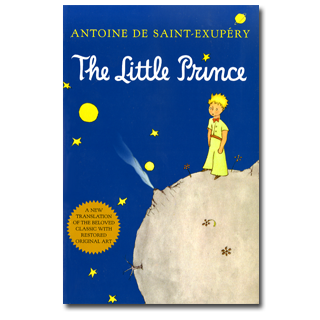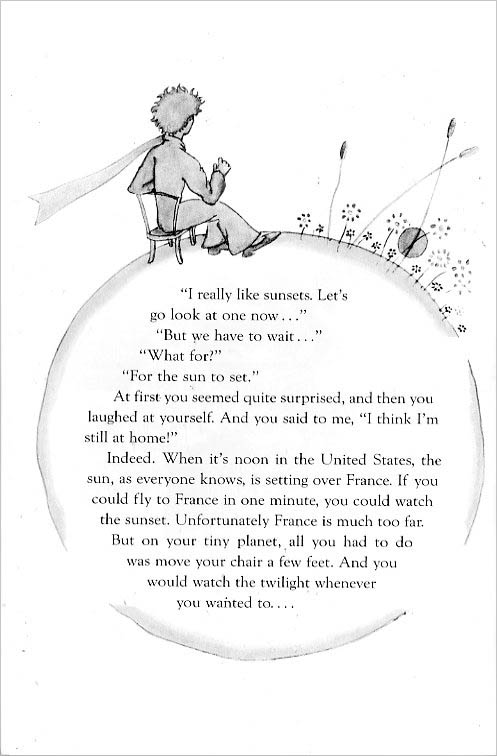
A FEW OTHER EVENTS FOR
APRIL 6:
- Happy birthday Alice Bach (Moses’ Ark: Stories From the Bible), Fulvio Testa (Aesop’s Fables), Jerdine Nolen (Thunder Rose), and Graeme Base (Animalia).
- It’s the birth date of Ida Chittum (1918-2002), The Cat’s Pajamas; and Douglas Hill (1935-2007), The Dragon Charmer.
- The Italian painter and architect Raphael (1483-1520) was born on this day. Read Raphael by Mike Venezia and Raphael by Juliet Mofford.
- In 1896, the first modern Olympic Games opened in Athens. Read the Percy Jackson and the Olympians series, by Rick Riordan.
- It’s National Tartan Day, honoring Americans of Scottish descent. Read books from the Tartan Magic series by Jane Yolen.
On April 6, 1943, one of the most unusual offerings in the children’s book cannon was published. Whether it was a book for adults or children or more appropriately “all ages” would become part of the ongoing debate about The Little Prince. Certainly some of the early reviewers like P. L. Travers and Anne Carroll Moore of the New York Public Library believed children could benefit from reading it. But with 80 million copies in print and translations into more than 210 languages, Antoinie de St. Exupery’s classic has definitely engrossed readers of all ages and became one of the fifty bestselling books of all times.
One of the most eccentric characters ever to appear in a book, the Little Prince from planet B-612, encounters the narrator of the story, a stranded aviator in the Sahara Desert. While the pilot works to repair his engine before he runs out of water, the prince describes his journey from planet to planet, the rose he left behind, and what he has learned about relationships and life. Containing a mesmerizing story with a great deal of philosophy, the book ends with the death of the space traveler — however, his body vanishes.
French aviator Antoine de Saint-Exupery was living on Long Island while he wrote his masterpiece. Several stories exist about the beginnings of the book. The version I’ve always liked the best claims that Saint-Exupery, while dining with his publisher Eugene Reynal, sketched out on the tablecloth a cast of invented characters, including a little boy with wings. Either Eugene or his wife Elizabeth suggested that the author write a fairy story that could be published at Christmas.
The book turned out to be a good deal more than a fairy story. To create The Little Prince, Saint-Exupery relied on some of his own experiences, such as his plane crashing in the Libyan desert. His wife Consuelo claimed to be the inspiration for the rose in the story. Certainly some of the Little Prince’s statements about his beloved rose describe the tumultuous marriage of Consuelo and Antoine. In this amazing book, Saint-Exupery took his own experience and transformed it into a statement about the universe and life.
Written in French, the book was first released in English in the United States, with the French version coming later. In 2000 poet Richard Howard published a new translation, correcting some of the errors of the first American edition and providing a fresh interpretation of this classic. The book has influenced thousands with its wisdom and whimsy. Artist Peter Sis wrote in Everything I Need to Know I Learned from a Children’s Book, “The Little Prince showed me that very individual and personal feelings could be communicated in a story. But it also showed me that an artist could incorporate these feelings and emotions in the drawings. It…guided me to a career as an illustrator.” And Fred Rogers of Mr. Rogers Neighborhood kept a quote from the book on his wall: “L’essential est invisible pour les yeux.” (“What is essential is invisible to the eye.”)
Slightly over a year after the publication of The Little Prince, Antoine de Saint-Exupery died in an airplane crash, while serving as a pilot for the Free French Forces in World War II. But he still lives on for his readers in the guise of his most famous characters, the Little Prince from planet B-612.
Here’s a page from The Little Prince:

Originally posted April 6, 2011. Updated for 2024.













I read Little Prince years ago, and I thought it was really a strange and silly book. I now see I need to approach it again.
This incident reminds me of the first time I picked up Bleak House. I simply couldn’t get my head around that book and after a few pages I decided I wasn’t going to grasp the language or the idea.
I came back to Bleak House at a later time in a different frame of mind. I spent the first few pages adjusting to the language, getting in the flow, so to speak. (I had read a number of of other Dickens books with great success) Suddenly, I realized Bleak House was one of the most amazing books I’d ever had in my hands. To this day I’m in awe of the beauty and power of Dickens pen in Bleak House.
There is however one Saint-Exupery book which I read that I found hauntingly beautiful. One that flows like poetry. The non-fiction book Wind, Sand and Stars. I’ve recommended this book to all pilots and children for a long time.
Now, I’m off to reread The Little Prince.
I, too, was overwhelmed by the thought of trying to read The Little Prince when I was a kid, but looking back now I think that’s because my mom had the French version! I definitely need to give it a shot in English.
J’aime le petit prince.
I studied it in my final French class with my mentor. Maybe it was an omen of children’s lit studies to come….
I see in your EVENT column that it is Barbara Cooney’s birthday. I will celebrate by pulling Miss Rumphius (1982) from the library shelf and encouraging a child to check it out. The story concludes in the spring so it is a perfect time to read it and remember its talented author/illustrator.
The colors that Cooney uses to illustrate the last few pages of her book are lovely! Spring green, periwinkle blue, lavendar and pink! “…there were lupines everywhere. Fields and hillsides were covered with blue and purple and rose-colored flowers. They bloomed along the highways and down the lanes.”
I first read this book in French, and later in English and both times I found myself captivated by the illustrations of the protagonist sitting on a planet, seemingly all alone in a vast galaxy. There is something beautiful and wistful about this story that still touches me.
I have loved this book since college, and it is one of the few titles I have read in both English and French.
I find it beautiful and profound and sweet, every decade since.
When I read the book as a child, the idea that grown-ups didn’t know everything and that children actually know things that “disappear” as they grow, were novel ideas to me. The little prince’s voice never left me, his warnings about losing things that matter. And I relish the fact that the drawings came first – the very thing he had been discouraged from pursuing as a child. The original manuscript can be seen (by appointment) at the Morgan Library & Museum in New York City. I had a chance to spend a memorable afternoon looking through the drawings, including some (of the pilot himself) that were not included in the final book.
Diane: Thanks for mentioning where the original manuscript can be found. How wonderful that you got to see it.
The first time I read this book, I was struck by the drawings on the first pages. My personal drawings are limited to crude stick figures, so I loved the idea of the Little Prince’s perfect sheep contained anonymously in a box, as long as you have some holes for breathing.
Like Jamie, it was those first few drawings that really drew me in! Actually, I didn’t know much about “The Little Prince” until my boyfriend sat me down with a cup of tea and said, “I’m reading this book to you. Don’t interrupt until I’m finished.” He read it, cover to cover, and then I borrowed it for a week so I could enjoy the illustrations carefully and slowly. Later on, I was able to find an edition designed for teachers and my Korean students absolutely loved it, too!
I remember seeing some sort of movie about the book or about St. Exupery when I was a child, at the matinee. I have read the book but apparently not fallen in love with it. My favorite part is at the beginning when he draws the elephant inside the snake and all the adults think it is a hat.
I don’t know that I’ve read it as an adult. I’ll look into that. And how cool that one can see the original manuscript!
Congratulations and happy birthday to your wonderful blog, Anita — a love letter to so many good books, as you say! You note that today marks Barbara Cooney’s birthday. My affection for her books endures — those that she wrote and illustrated and those written by others that she illustrated. I shared Roxaboxen with students this week, a vivid tribute to imagination and play.
Rusty: Thanks for your good wishes; there are so many great Cooney books to share. Glad to hear about Roxaboxen.
My birthday is today and I was excited to think I shared it with Barbara Cooney – but when I googled her bio, most sites say she was born August 6th, including Encyclopedia Britannica: http://www.britannica.com/EBchecked/topic/712798/Barbara-Cooney.
Regardless – she is one of my favorite author/illustrators and I wish April 6th was the date! I’d love to have the same birth day. 🙂
Thanks for letting me know this. I’ll check on Cooney’s birthday — you would be surprised how many different days are listed for various authors.
You are correct — August 6th it is. The change will be made. Thanks for catching this.
I’m afraid I’ll always be faithful to the Katherine Woods translation, errors and all. It is as much a celebration of the story as it is of the words.
And speaking of The Little Prince, one of the casualties of France’s adoption of the Euro was their 50 Franc note as it had images of the little prince: http://www.banknotes.com/fr157a.htm. It’s hard to see in the image, but when you tilted the bill AND held it up to the light, you saw laminated sheep and a watermark sheep!